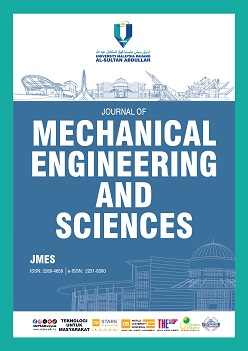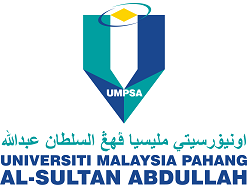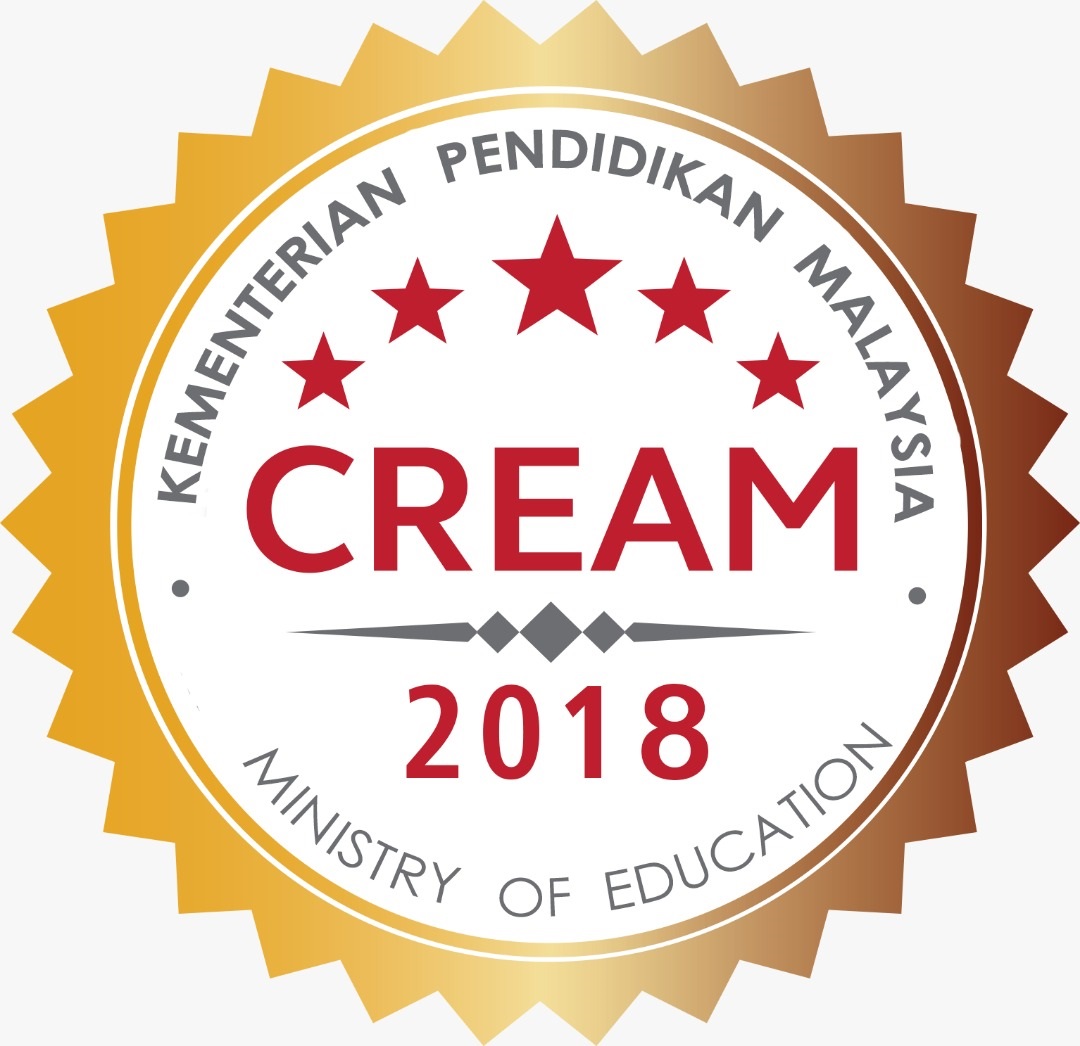Effect of PVA/Col/HNT hydrogel on physiochemical properties of PVDF/PVA electrospun using casting and freeze-thawing method for nerve tissue regeneration application
DOI:
https://doi.org/10.15282/jmes.19.1.2025.9.0826Keywords:
Electrospinning, Freeze – thawing, Casting, Nerve tissue, Tissue regeneration, Bilayer compositeAbstract
Nerve tissue engineering requires biomaterials that provide mechanical strength, biocompatibility, and an optimal microenvironment for cell attachment and proliferation. Electrospun polymeric scaffolds have gained attention due to their structural similarity to the extracellular matrix. However, their inherent brittleness and limited bioactivity necessitate further enhancement. This study investigates the effects of incorporating a polyvinyl alcohol/collagen/halloysite nanotube (PVA/Col/HNT) hydrogel on the physicochemical properties of polyvinylidene fluoride/polyvinyl alcohol (PVDF/PVA) electrospun mats to improve their suitability for nerve regeneration applications. The hydrogel was integrated onto the electrospun matrices using casting and freeze-thawing techniques. The resultant composites were characterized for their morphological, mechanical, and biological properties. Field emission scanning electron microscopy revealed a uniform distribution and interconnectivity between the electrospun mat and hydrogel layer, supported by Fourier transform infrared spectroscopy spectra indicating strong hydrogen bonding interactions. Atomic force microscopy demonstrated reduced surface roughness (Ra: 5.3 nm electrospun surface, 41.9 nm hydrogel surface) compared to single-layer electrospun mats (Ra: 192.5 nm), promoting better cell attachment and proliferation. Mechanical testing showed a significant increase in tensile strength (1.762 MPa) and Young's modulus (39.612 MPa) while maintaining high elongation at break (316.253%), ensuring flexibility and durability. The scaffold's piezoelectric properties further enhanced its potential for nerve regeneration. In vitro biocompatibility assays using human fibroblast cells confirmed increased cell adhesion and proliferation, highlighting the suitability of the PVA/Col/HNT hydrogel-infused PVDF/PVA mats for soft tissue engineering. This study underscores the composite's potential in advancing nerve regeneration therapies.
References
[1] G. Hussain, J. Wang, A. Rasul, H. Anwar, M. Qasim, S. Zafar, et al., “Current status of therapeutic approaches against peripheral nerve injuries: A detailed story from injury to recovery,” International Journal of Biological Sciences, vol. 16, no. 1, pp. 116-134, 2020.
[2] C. R. Carvalho, R. L. Reis, J. M. Oliveira, “Fundamentals and current strategies for peripheral nerve repair and regeneration,” Advanced in Experimental Medicine and Biology, vol. 1249, pp.173-201, 2020.
[3] M. E. Harley-Troxell, R. Steiner, R. C. Advincula, D. E. Anderson, M. Dhar, “Interactions of cells and biomaterials for nerve tissue Engineering: Polymers and fabrication,” Polymers, vol. 15, no. 18, p. 3685, 2023.
[4] M. Miloro, G. E. Ghali, P. E. Larsen, P. Waite. Peterson’s Principles of Oral and Maxillofacial Surgery. 4th Eds. Switzerland: Springer Cham, 2022.
[5] P. D. Dalton, K. L. O'Neill, A. P. Pêgo, G. W. Plant, D. R. Nisbet, M. Oudega, et al. Tissue Engineering of the Nervous System: Tissue Engineering. 3rd Eds. United States: Academic Press, 2023.
[6] N. Askarzadeh, M. H. Nazarpak, K. Mansoori, M. Farokhi, M. Gholami, J. Mohammadi, et al., “Bilayer cylindrical conduit consisting of electrospun polycaprolactone nanofibers and DSC cross‐linked sodium alginate hydrogel to bridge peripheral nerve gaps,” Macromolecular Bioscience, vol. 20, no. 9, p. 2000149, 2020.
[7] V, Pande, A. Kharde, P. Bhawar, V. Abhale, “Scaffolds: Porous scaffold for modulated drug delivery,” Austin Therapeutics, vol. 3, no. 1, p. 1027, 2016.
[8] L. Yu, C. J. Bennett, C. H. Lin, S. Yan, J. Yang, “Scaffold design considerations for peripheral nerve regeneration,” Journal of Neural Engineering, vol. 21, no. 4, p. 041001, 2024.
[9] J. Fang, L. Nan, K. Song, Z. Weng, J. Shan, V. Shahin, et al., “Application and progress of bionic scaffolds in nerve repair: A narrative review,” Advanced Technology in Neuroscience, vol. 1, no. 1, pp. 43-50, 2024.
[10] M. Rahman, T. Mahady Dip, R. Padhye, S. Houshyar, “Review on electrically conductive smart nerve guide conduit for peripheral nerve regeneration,” Journal of Biomedical Materials Research Part A, vol. 111, no. 12, pp. 1916-1950, 2023.
[11] Q. Wang, H. Wang, Y. Ma, X. Cao, H. Gao, “Effects of electroactive materials on nerve cell behaviors and applications in peripheral nerve repair,” Biomaterials Science, vol. 10, no. 21, pp. 6061-6076, 2022.
[12] P. Saxena, P. Shukla, “A comprehensive review on fundamental properties and applications of poly (vinylidene fluoride) (PVDF),” Advanced Composites and Hybrid Materials, vol. 4, no. 1, pp. 8-26, 2021.
[13] Q. Li, C. Wen, J. Yang, X. Zhou, Y. Zhu, J. Zheng, et al., “Zwitterionic biomaterials,” Chemical Reviews, vol. 122, no. 23, pp. 17073-17154, 2022.
[14] E. R. Radu, S. I. Voicu, V. K. Thakur, “Polymeric membranes for biomedical applications,” Polymers, vol. 15, no. 3, p. 619, 2023.
[15] M. A. S. Hamzah, N. H. M. Nayan, N. Jusoh, “Optimization of polyvinylidene/polyvinyl alcohol electrospun using Taguchi method for tissue engineering application,” Journal of Advanced Research in Applied Mechanics, vol. 15, no. 1, pp. 81-92, 2025.
[16] C. Bertsch, H. Maréchal, V. Gribova, B. Lévy, C. Debry, P. Lavalle, et al., “Biomimetic bilayered scaffolds for tissue engineering: from current design strategies to medical applications,” Advanced Healthcare Materials, vol. 12, no. 17, p. 2203115, 2023.
[17] X. Yu, T. Zhang, Y. Li, “3D printing and bioprinting nerve conduits for neural tissue engineering,” Polymers, vol. 12, no. 8, p. 1637, 2020.
[18] Y. Chen, Y. Xu, S. Ramakrishna, “Electromagnetic-responsive targeted delivery scaffold technology has better potential to repair injured peripheral nerves: A narrative review,” Advanced Technology in Neuroscience, vol. 1, no. 1, pp. 51-71, 2024.
[19] S. H. Chen, P. H. Lien, F. H. Lin, P. Y. Chou, C. H. Chen, Z. Y. Chen, et al., “Aligned core–shell fibrous nerve wrap containing Bletilla striata polysaccharide improves functional outcomes of peripheral nerve repair,” International Journal of Biological Macromolecules, vol. 241, p. 124636, 2023.
[20] M. S. A. Hamzah, N. H. M. Nayan, N. Jusoh, N. A. Maaruf, “Physiochemical and in-vitro bioactivity characterization of polyvinyl alcohol / halloysite nanotube / collagen (PVA/HNT/Col) using freeze-thawing method and spin coated technique for wound healing applications,” Journal of Advanced Research in Applied Mechanics, vol. 152, no. 1, pp. 68-80, 2025.
[21] ASTM E2859-11, “Standard Guide for Size Measurement of Nanoparticles Using Atomic Force Microscopy,” American Society for Testing and Materials, United States, 2023.
[22] ASTM D3039/D3039M, “Standard Test Method for Tensile Properties of Polymer Matrix Composite Materials,” American Society for Testing and Materials, United States, 2023.
[23] H. Gade, N. Parsa, O. S. Roberts, G. G. Chase, D. H. Reneker, “Charge measurement of electrospun polyvinylidene fluoride fibers using a custom-made Faraday bucket,” Review of Scientific Instruments, vol. 91, no. 7, p. 0075107, 2020.
[24] H. Gade, S. Nikam, G. G. Chase, D. H. Reneker, “Effect of electrospinning conditions on β-phase and surface charge potential of PVDF fibers,” Polymer, vol. 228, p.123902, 2021.
[25] G. G. Flores-Rojas, B. Gómez-Lazaro, F. López-Saucedo, R. Vera-Graziano, E. Bucio, E. Mendizábal, “Electrospun scaffolds for tissue engineering: A review,” Macromol, vol. 3, no. 3, pp. 524-553, 2023.
[26] J. M. Ameer, A. K. Pr, N. Kasoju, “Strategies to tune electrospun scaffold porosity for effective cell response in tissue engineering,” Journal of Functional Biomaterials, vol. 10, no. 3, p. 30, 2019.
[27] D. Wang, J. Wu, S. Wu, X. Chen, W. Li, X. Chen, et al., “Ice‐mediated reactions and assemblies in diverse domains,” Advanced Functional Materials, vol. 34, no. 29, p. 2315532, 2024.
[28] B. He, S. Ding, Z. Shi, “A comparison between profile and areal surface roughness parameters,” Metrology and Measurement Systems, vol. 28, no. 3, pp. 413-438, 2021.
[29] M. J. Woźniak, A. Chlanda, P. Oberbek, M. Heljak, K. Czarnecka, M. Janeta, et al., “Binary bioactive glass composite scaffolds for bone tissue engineering—Structure and mechanical properties in micro and nano scale. A preliminary study,” Micron, vol. 119, pp. 64-71, 2019.
[30] I. Sands, R. Demarco, L. Thurber, A. Esteban‐Linares, D. Song, E. Meng, et al., “Interface‐mediated neurogenic signaling: The impact of surface geometry and chemistry on neural cell behavior for regenerative and brain–machine interfacing applications,” Advanced Materials, vol. 36, no. 33, p. 2401750, 2024.
[31] Y. Qian, H. Lin, Z. Yan, J. Shi, C. Fan, “Functional nanomaterials in peripheral nerve regeneration: Scaffold design, chemical principles and microenvironmental remodeling,” Materials Today, vol. 51, pp. 165-187, 2021.
[32] N. Ghane, M. H. Beigi, S. Labbaf, M. H. Nasr-Esfahani, A. Kiani, “Design of hydrogel-based scaffolds for the treatment of spinal cord injuries,” Journal of Materials Chemistry B, vol. 8, no. 47, pp. 10712-10738, 2020.
[33] G. Kazemzadeh, N. Jirofti, H. K. Mehrjerdi, M. Rajabioun, S. A. Alamdaran, D. Mohebbi-Kalhori, et al., “A review on developments of in-vitro and in-vivo evaluation of hybrid PCL-based natural polymers nanofibers scaffolds for vascular tissue engineering,” Journal of Industrial Textiles, vol. 52, pp. 1-26, 2022.
[34] E. Tanzli, A. Ehrmann, “Electrospun nanofibrous membranes for tissue engineering and cell growth,” Applied Sciences, vol. 11, no. 15, p. 6929, 2021.
[35] A. K. Kolour, S. Ghoraishizadeh, M. S. Zaman, A. Alemzade, M. Banavand, J. Esmaeili, et al., “Janus films wound dressing comprising electrospun gelatin/PCL nanofibers and gelatin/honey/curcumin thawed layer,” ACS Applied Bio Materials, vol. 7, no. 12, pp. 8642-8655, 2024.
[36] M. D. M. C. Delgado, “Electrospun functional nanofibers for antimicrobial applications in air filtration and wound dressing,” Ph.D. Thesis, Hong Kong University of Science and Technology, Hong Kong, 2022.
[37] M. Andonegi, D. Correia, N. Pereira, M. Salado, C. M. Costa, S. Lanceros-Mendez, et al., “Sustainable collagen blends with different ionic liquids for resistive touch sensing applications,” ACS Sustainable Chemistry & Engineering, vol. 11, no. 15, pp. 5986-5998, 2023.
[38] M. O. Yusuf, “Bond characterization in cementitious material binders using Fourier-transform infrared spectroscopy,” Applied Sciences, vol. 13, no. 5, p. 3353, 2023.
[39] S. A. Bernal-Chávez, A. Romero-Montero, H. Hernández-Parra, S. I. Peña-Corona, M. L. Del Prado-Audelo, S. Alcalá-Alcalá, et al., “Enhancing chemical and physical stability of pharmaceuticals using freeze-thaw method: challenges and opportunities for process optimization through quality by design approach,” Journal of Biological Engineering, vol. 17, no. 1, p. 35, 2023.
[40] M. Zhang, C. Liu, B. Li, Y. Shen, H. Wang, K. Ji, et al., “Electrospun PVDF-based piezoelectric nanofibers: materials, structures, and applications,” Nanoscale Advances, vol. 5, no. 4, pp. 1043-1059, 2023.
[41] G. Kalimuldina, N. Turdakyn, I. Abay, A. Medeubayev, A. Nurpeissova, D. Adair, et al., “A review of piezoelectric PVDF film by electrospinning and its applications,” Sensors, vol. 20, no. 18, p. 5214, 2020.
[42] E. Gkouma, E. Gianni, K. Avgoustakis, D. Papoulis, “Applications of halloysite in tissue engineering,” Applied Clay Science, vol. 214, p. 106291, 2021.
[43] V. A. Revkova, K. V. Sidoruk, V. A. Kalsin, P. A. Melnikov, M. A. Konoplyannikov, S. Kotova, et al., “Spidroin silk fibers with bioactive motifs of extracellular proteins for neural tissue engineering,” ACS Omega, vol. 6, no. 23, pp. 15264-15273, 2021.
[44] C. H. Cheng, W. C. Chen, W. C., Yang, S. C. Yang, S. M. Liu, Y. S. Chen, et al., “Unidirectional polyvinylidene/copper-impregnated nanohydroxyapatite composite membrane prepared by electrospinning with piezoelectricity and biocompatibility for potential ligament repair,” Polymers, vol. 17, no. 2, p.185, 2025.
[45] S. T. Nasab, N. H. Roodbari, V. Goodarzi, H. A. Khonakdar, M. R. Nourani, “Nanobioglass enhanced polyurethane/collagen conduit in sciatic nerve regeneration” Journal of Biomedical Materials Research Part B: Applied Biomaterials, vol. 110, no. 5, pp. 1093-1102, 2022.
Downloads
Published
Issue
Section
License
Copyright (c) 2025 The Author(s)

This work is licensed under a Creative Commons Attribution-NonCommercial 4.0 International License.






